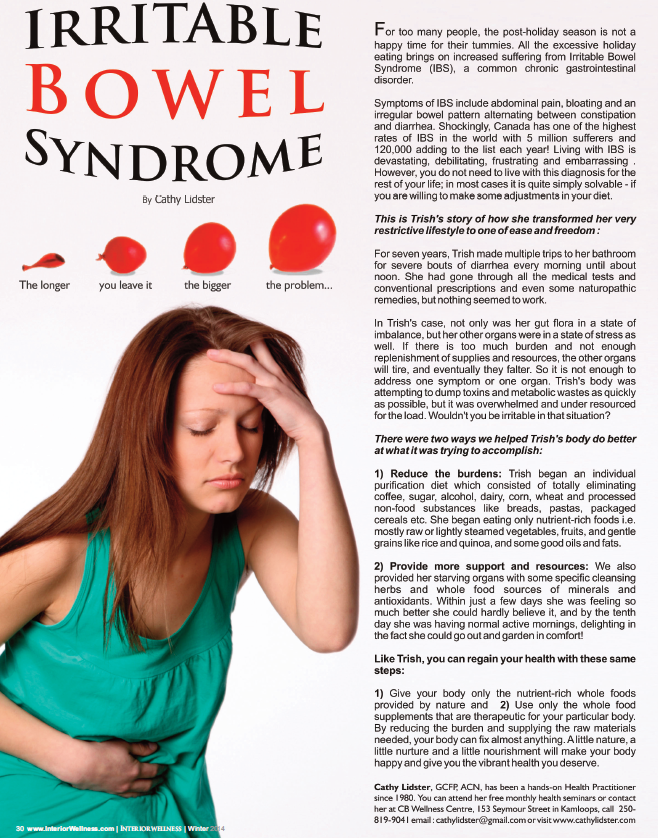Alice was the receptionist at the
senior centre where I volunteered weekly.
She had an engaging sense of humour and a young fresh attitude toward
life, though her 70 year old body was stooped with a pretty prominent dowager
hump. Her head was positioned forward
and downward so it was difficult for her to look up. In the afternoons her grandchildren would
show up at the centre so she could watch them after school while she
worked. Her duties at the centre also
included mopping the floor which was painful on her neck.
Alice was not a complainer by any means but
since she had been put on Fosomax for osteoporosis “prevention” she had begun
suffering from stomach pains which was wearing down her energy and causing too
many sick days. She became worried about
her job and her future security and that’s when she showed up in my
office. Maybe there was something she
could do about her diet. It seemed like she was becoming intolerant to more and
more foods and losing her appetite.
Alice had a long history of
indigestion, gas and reflux which she had handled over the years with
antacids. Taking antacids for many years
for GERD or indigestion is a fast track to osteoporosis. The reduced stomach acid will prevent your
body from digesting and utilizing the very nutrition your skeleton needs to
stay strong.
Most people with GERD and heartburn
are actually suffering from INsufficient
stomach acid. Instead of taking acid
soppers and stoppers, they need supplemental digestive acid and enzymes. When
treating the symptom and not the cause of the GERD, it’s a case of painting the
ceiling to fix the leak.
The real cause of the problem
actually begins with eating inferior processed and artificial foods too quickly
and in large quantities such that the digestive system is overwhelmed and
cannot produce enough stomach acid and enzymes to handle the burden. The undigested “food” begins to irritate the
lining of the gastro intestinal tract.
So the body does not get the nutrients it needs to repair the damaged
tissue as well as nourishing all the organs and joints of the body.
This person often develops arthritis and osteoporosis. They then begin long term treatment with
bisphosphonate drugs such as Fosomax, Boniva, and Actonel, which in turn carry a litany of further side effects,
including erosion of the esophagus, long term weakening of the skeleton and
potential for spontaneous hip fractures.
Now it’s time for narcotics and pain killers and behold the depressing picture
of invalidism, pain and decline as evidenced in our nursing homes of today.
Can we reverse this downward spiral
of health?
In Alice’s case we completely changed her diet to very simple,
uncombined, high quality meals with gently steamed vegetables, fats, simple
proteins, no breads or processed foods. We
used enzymes and healing supplements such as Okra Pepsin which coats the lining
of the digestive tract while providing some enzyme support. She needed a special source of minerals from
bone marrow, a calcium supplement derived from vegetables, (not crushed rock) Vitamin
C (not ascorbic acid) cod liver oil (super source of Vitamin D and other fat
soluble vitamins). And she began a very
gentle exercise program (Bones for Life) designed to realign the posture and
create the correct impact to stimulate bone building. She gained 2 inches in height!
_____________________________________
_____________________________________
Submitted as a public service by Cathy
Lidster, GCFP, ACNRT. She teaches “Bones
for Life” Movement classes and helps clients regain their health with diet and
lifestyle changes. For more information on Bones For Life®,
Nutrition Response® Testing, or next free health seminar contact cathylidster@gmail.com, visit www.cathylidster.com or call 250-819-9041.




